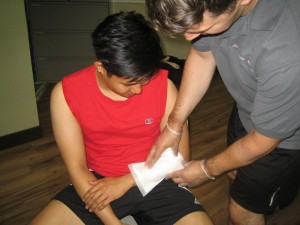Infection can be passed on via blood or bodily fluids that can be mixed with blood such as saliva. It is important to note that these are called blood-borne viruses. The risk for infection being transmitted in this manner mainly depends on the form of infection and manner on how one comes in contact with infected blood.
How an infection is passed on other others?
The main infections that can be passed on via blood include the following:
- Hepatitis C
- Hepatitis B
- HIV

The risk for an infection being spread on is the highest if the skin is damaged or punctured upon exposure with the infected blood
Of the three conditions, hepatitis B is likely to spread via blood and HIV is least likely. These viruses are also present in bodily fluids other than blood such as vaginal secretions, semen and even breast milk. Other bodily fluids such as saliva, urine and sweat only carry as small risk of infection unless they include blood.
Nevertheless, the presence of blood is not always evident and it is possible for an individual to have one of these infections without realizing it.
What are the routes of transmission?
The risk of infection being passed on in someone else’s blood also depends on how one came in contact with the infected blood which is the route of transmission.
High risk of infection
The risk for an infection being spread on is the highest if the skin is damaged or punctured upon exposure with the infected blood such as:
- Puncturing the skin using a used needle or other sharp object that has infected blood on it.
- Someone with blood in the saliva bites and breaks the skin.
Low risk for infection
The risk for infection being transmitted on is reduced if the blood is directly in contact with the mouth, eyes, nose or skin that is broken.
There is also a diminished risk if tainted blood directly touched skin that is already damaged such as eczema.

